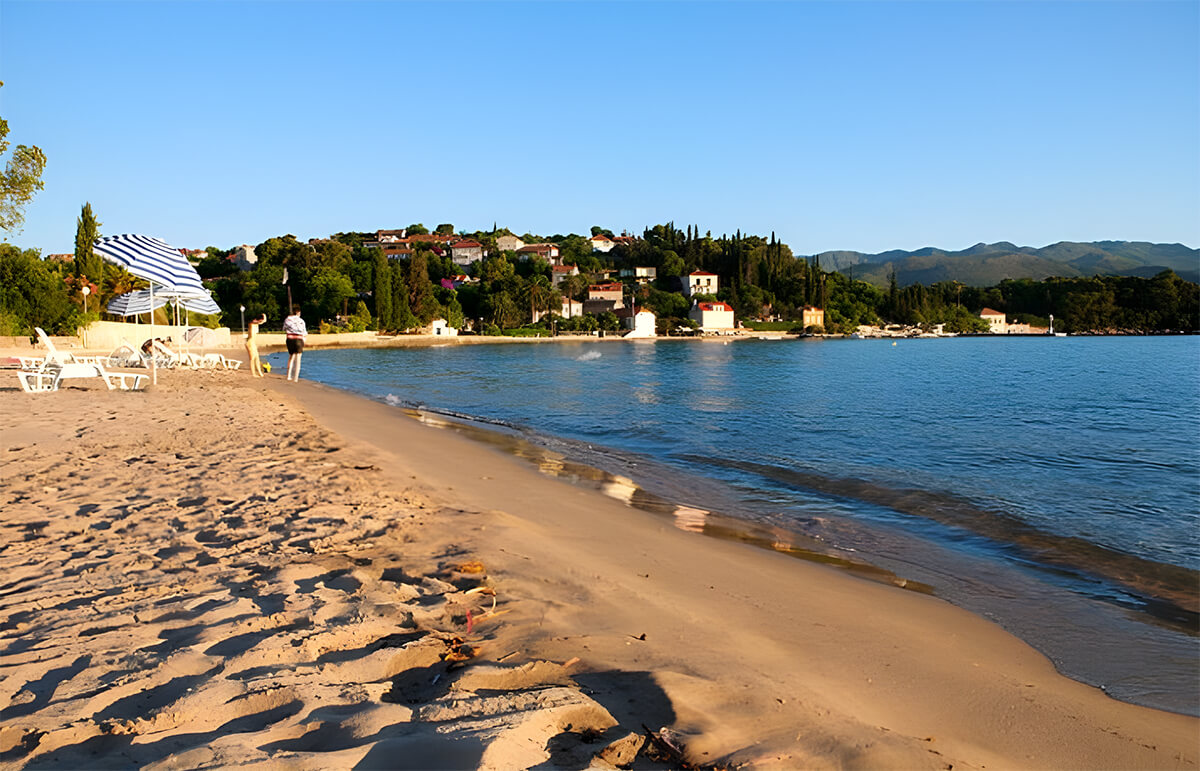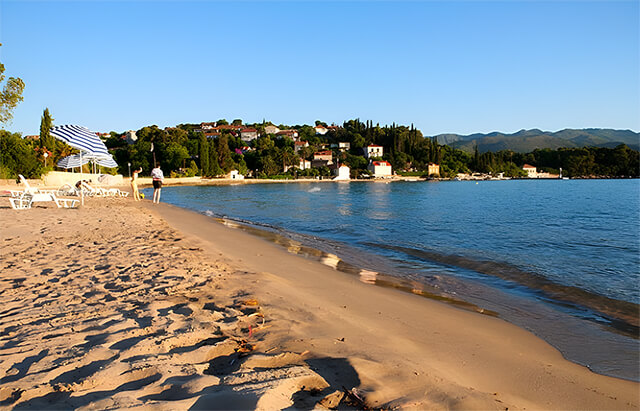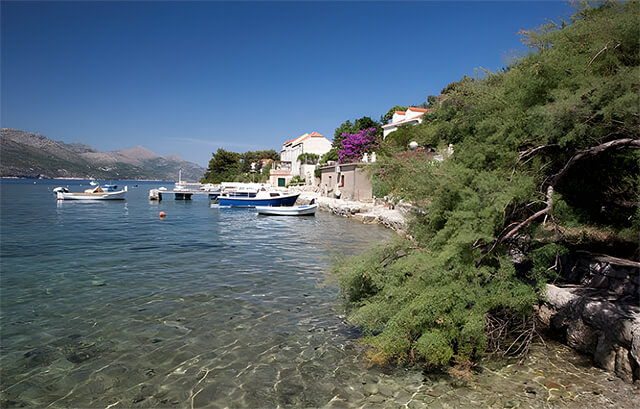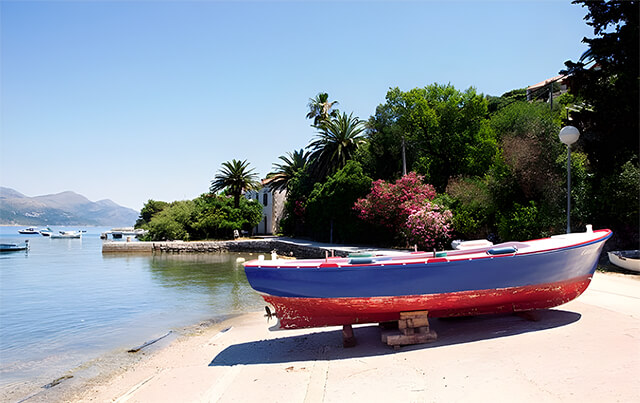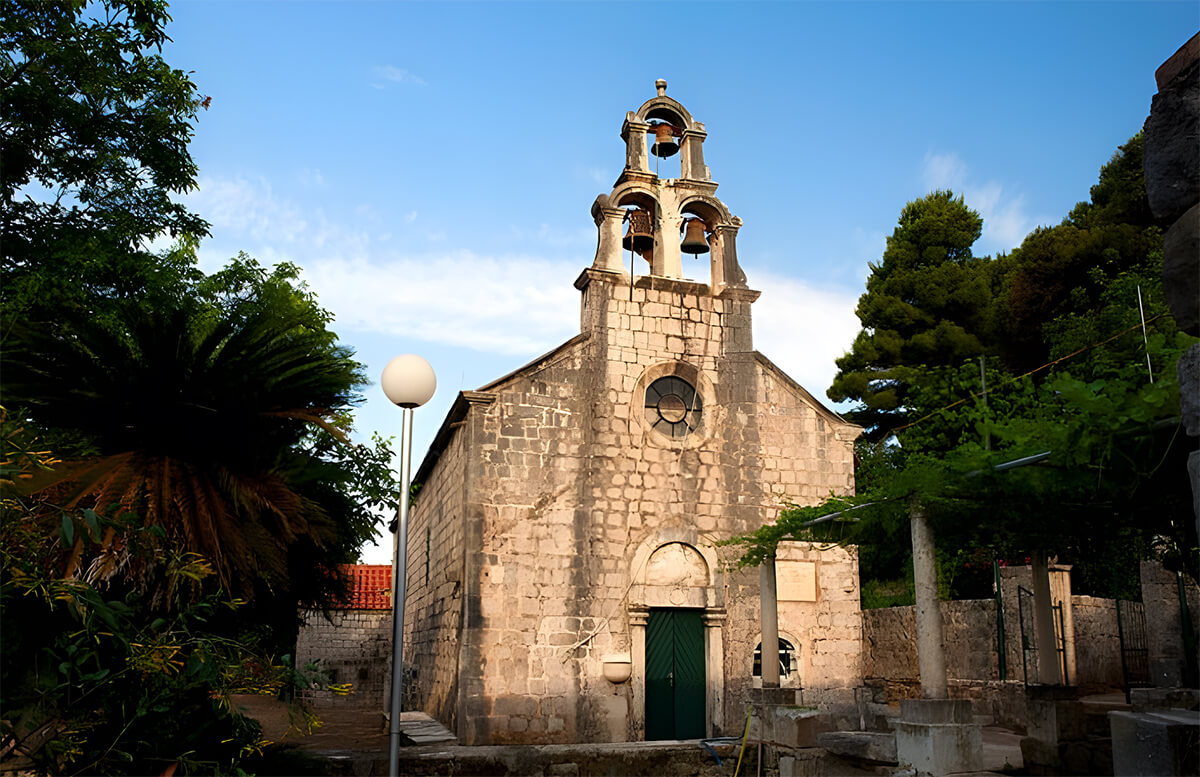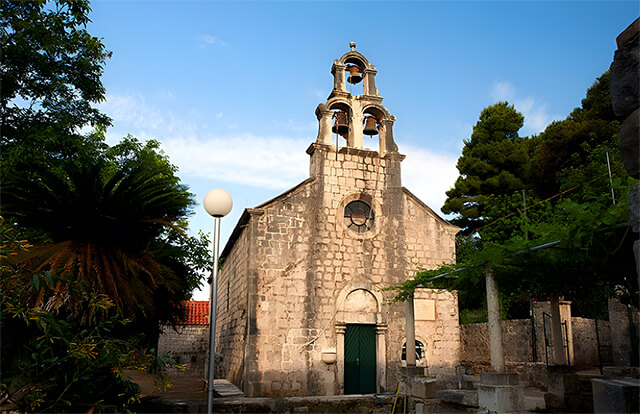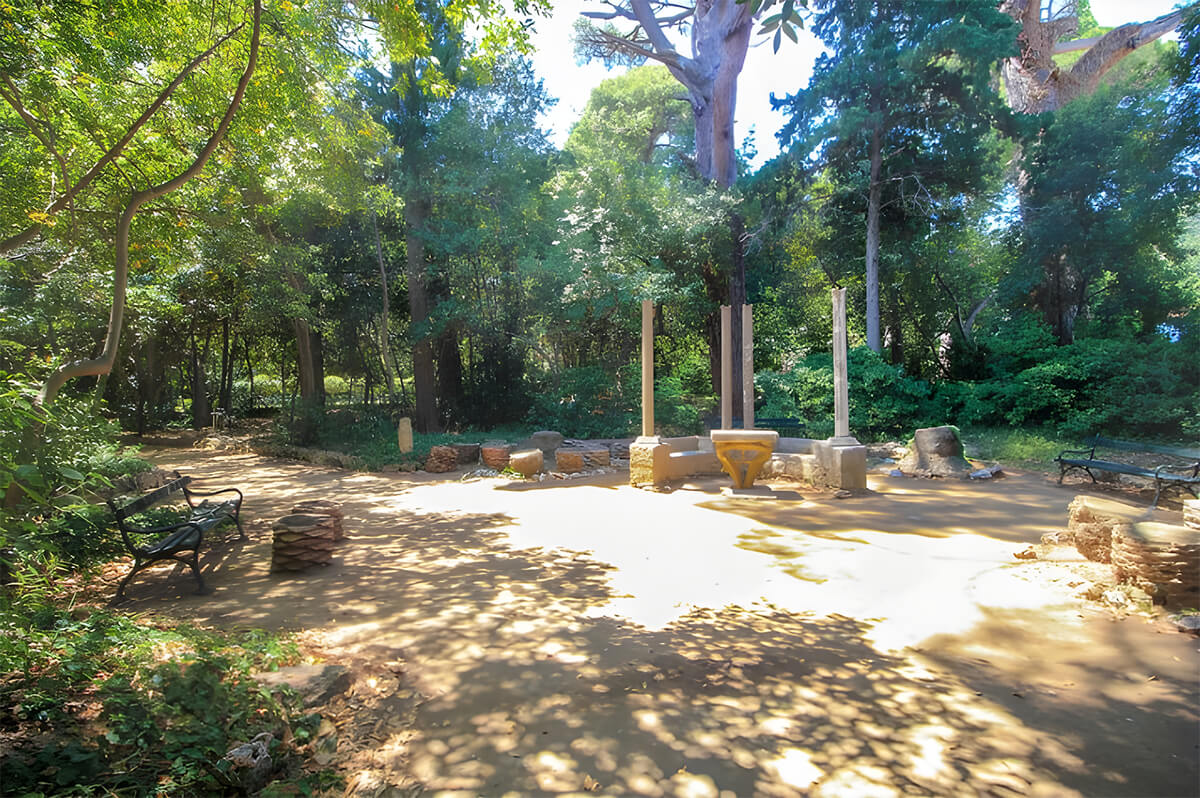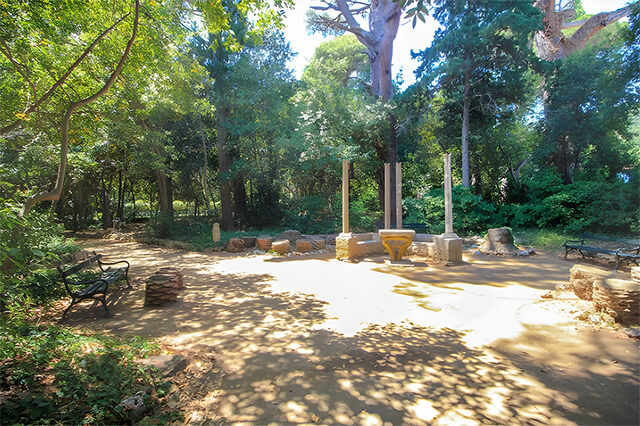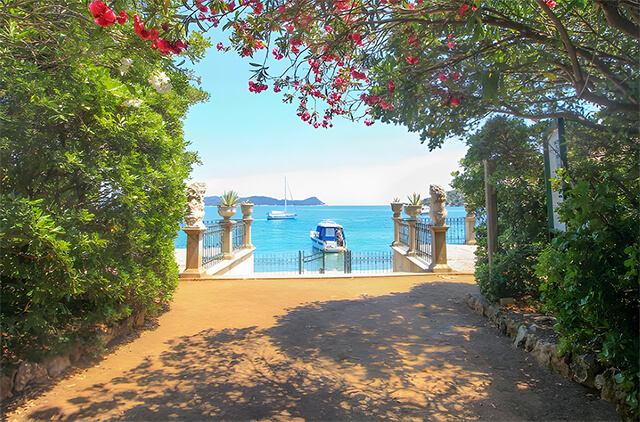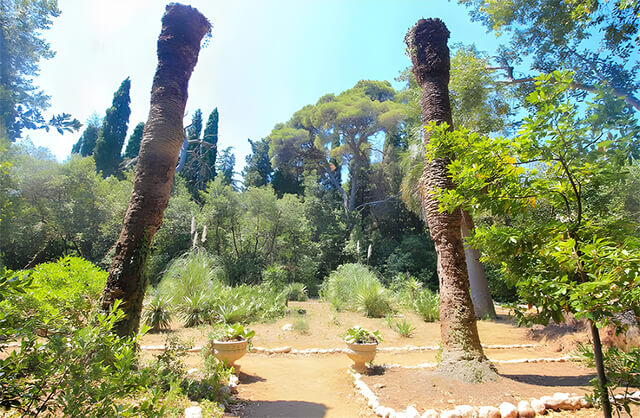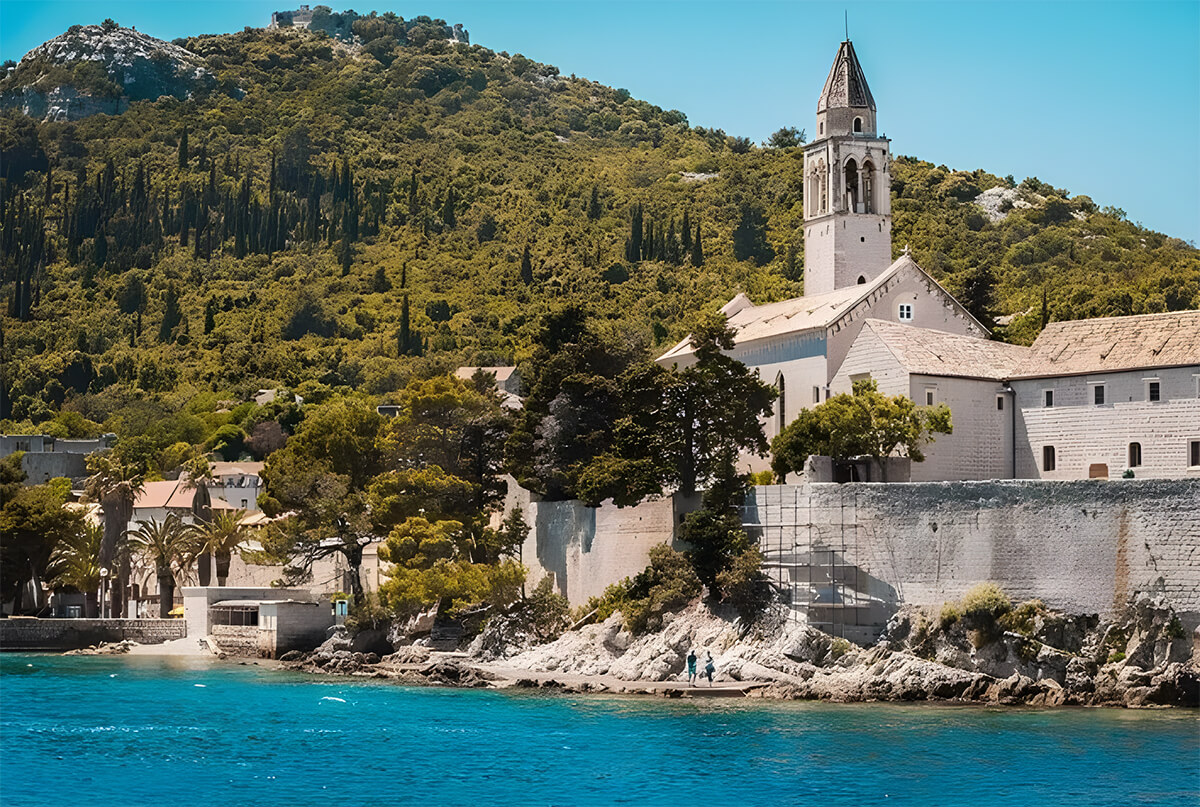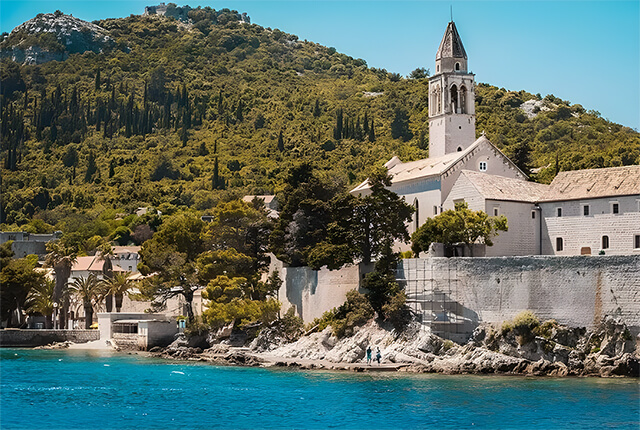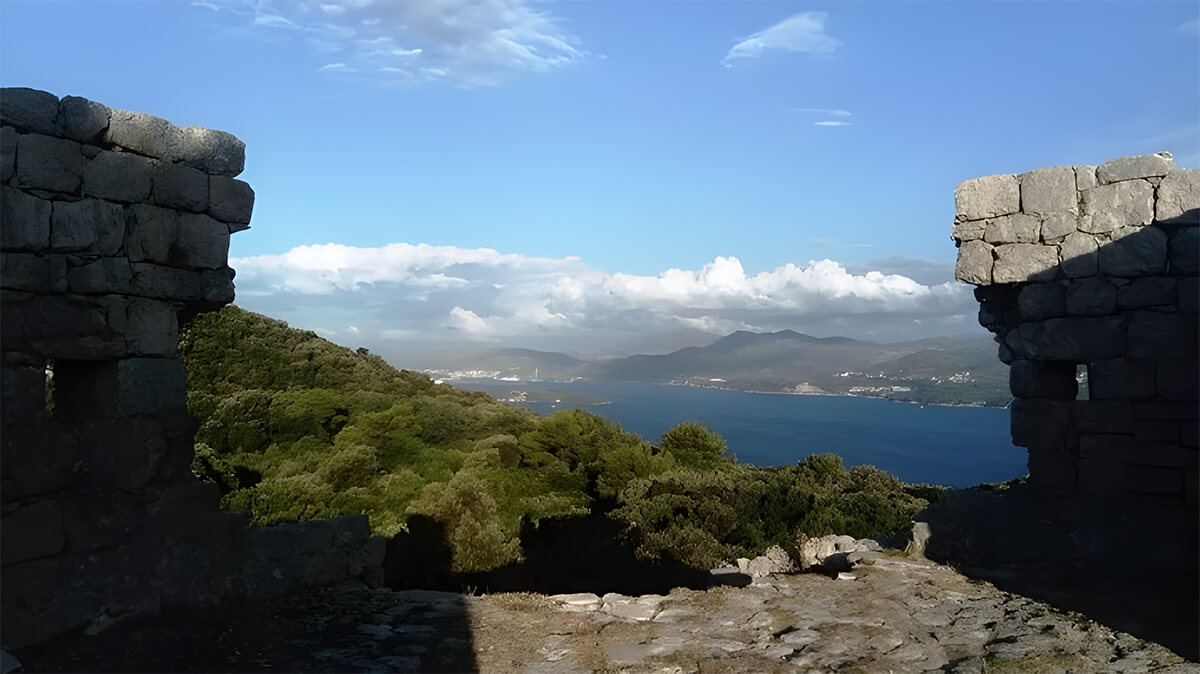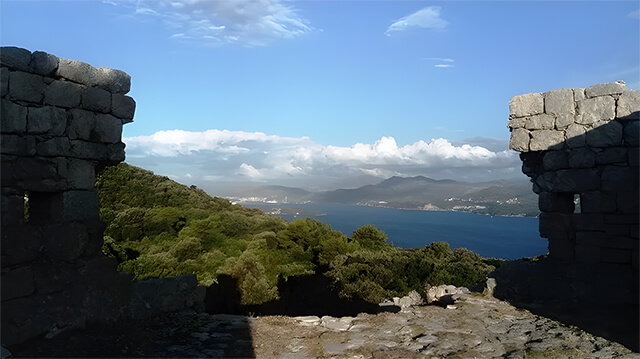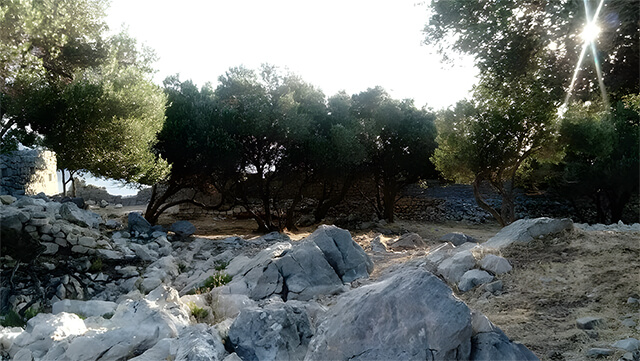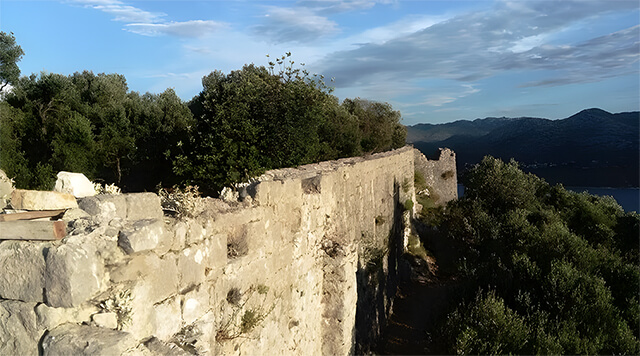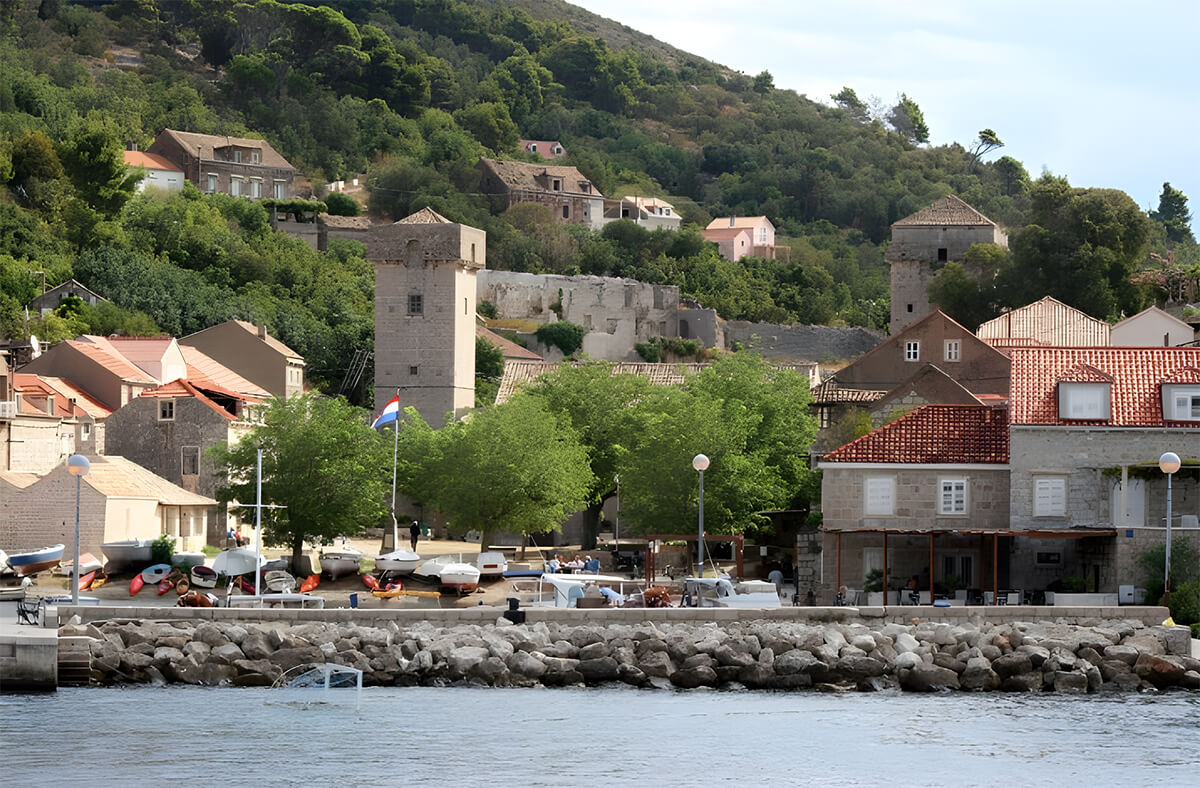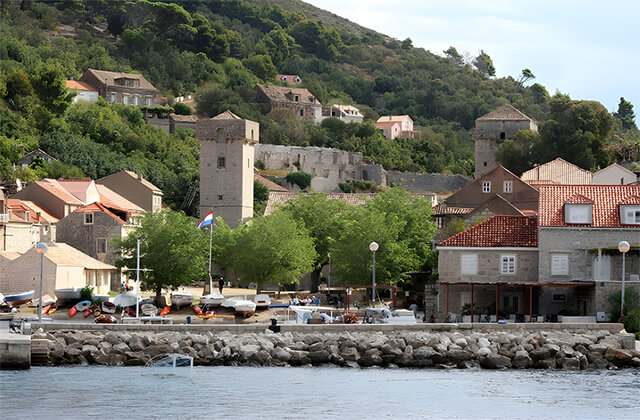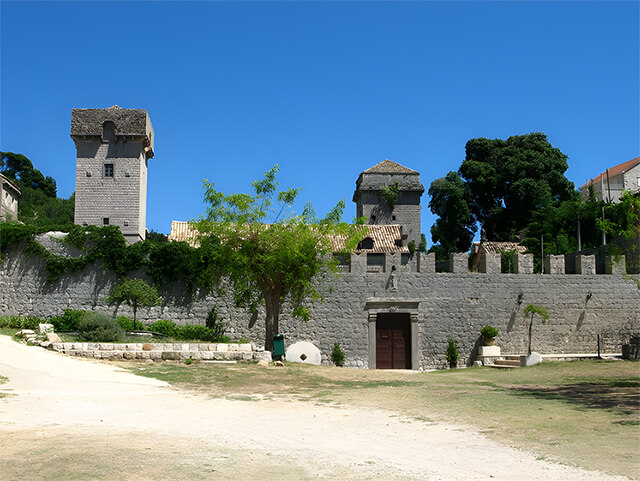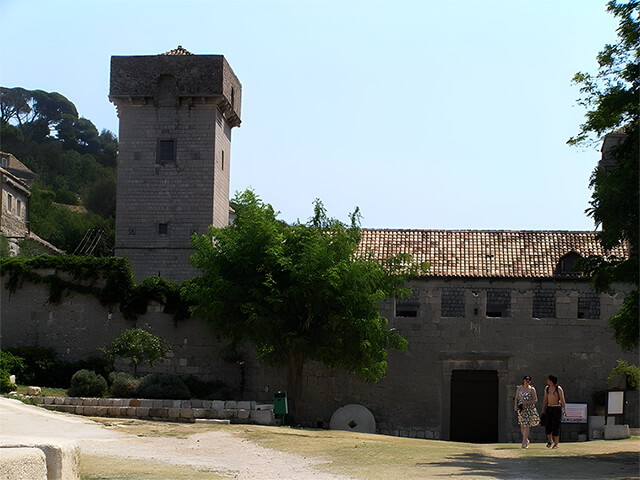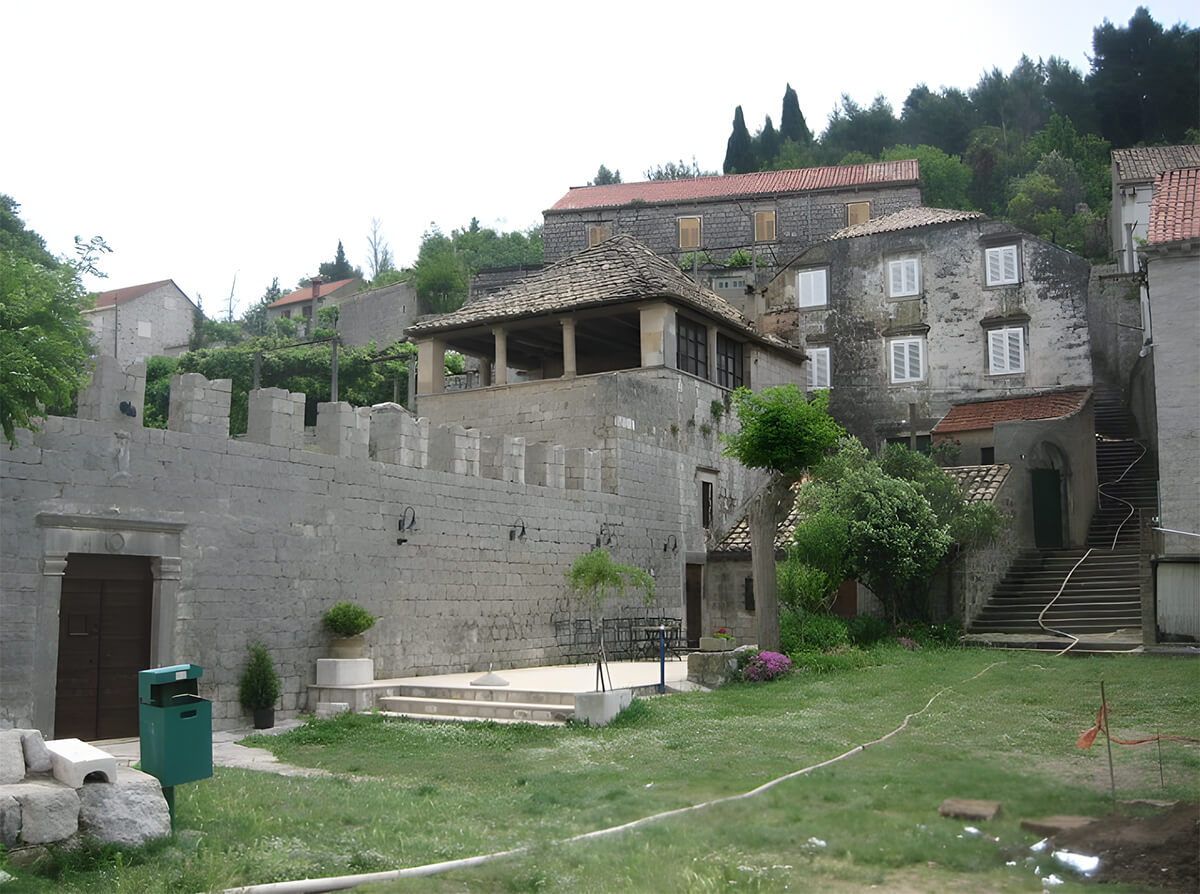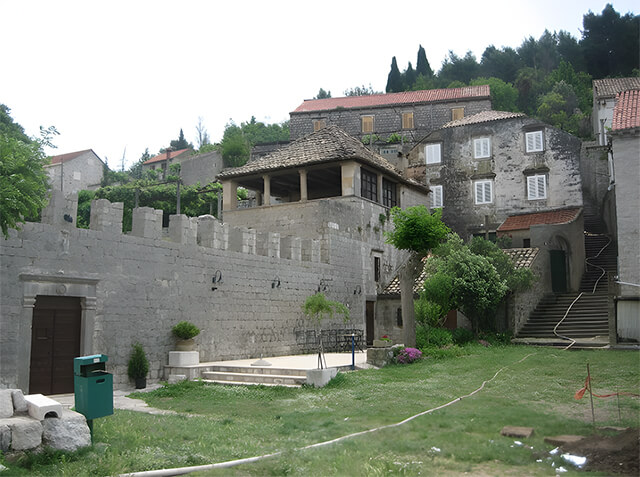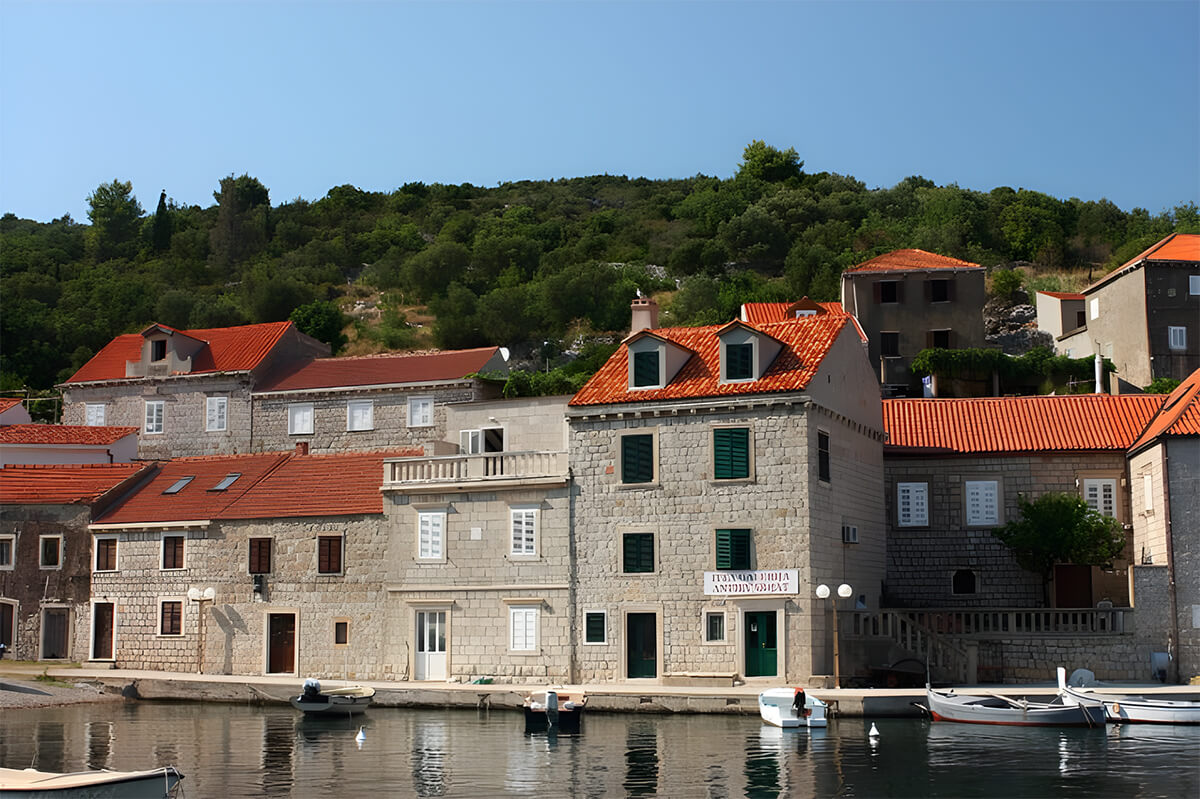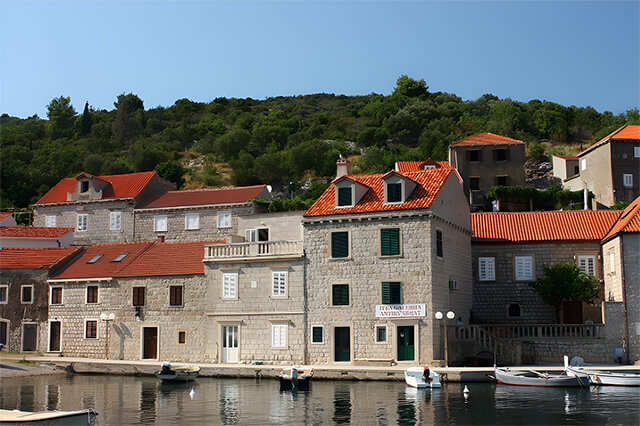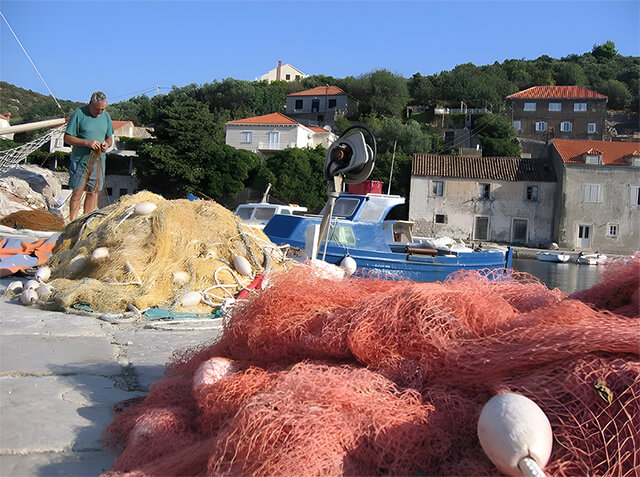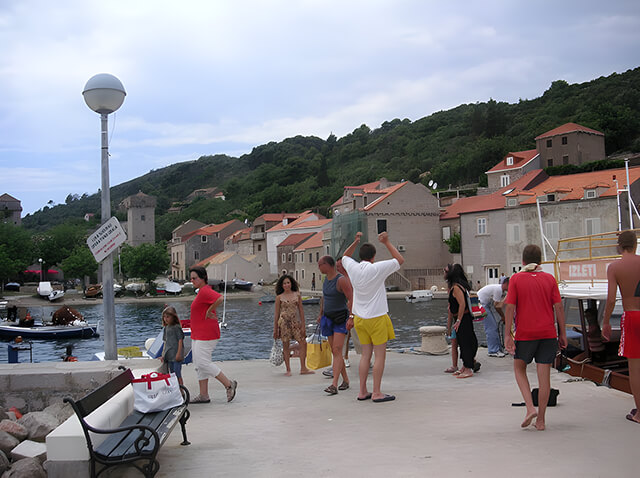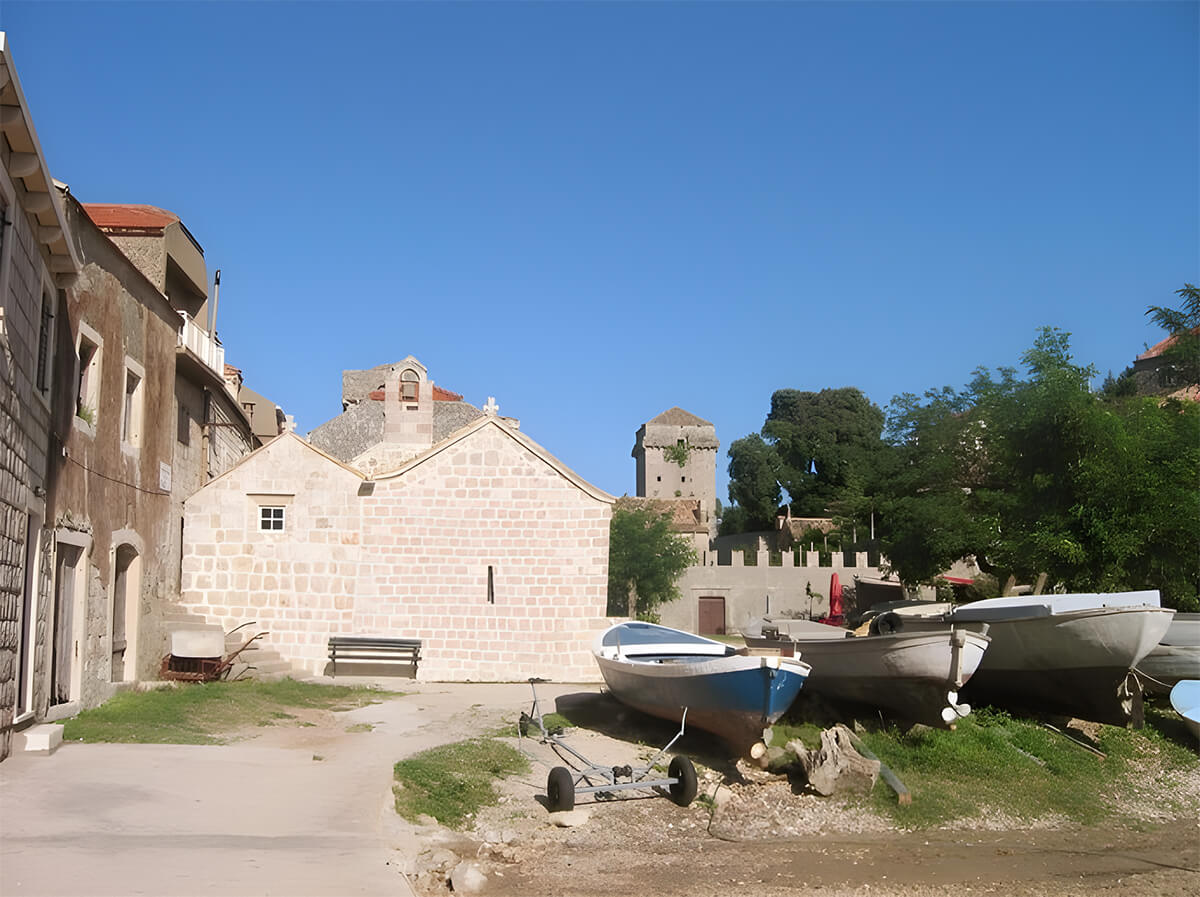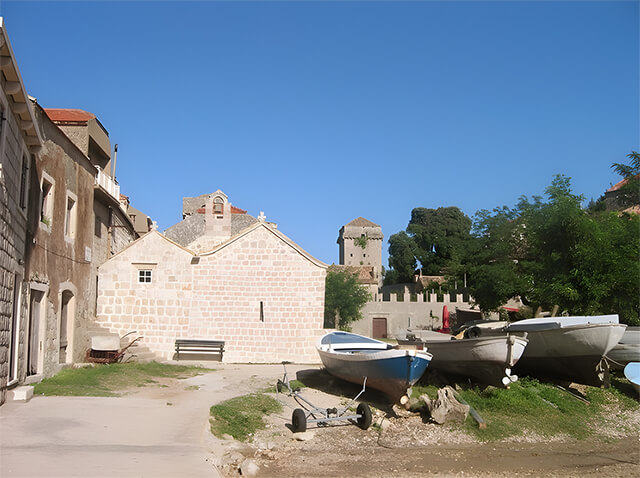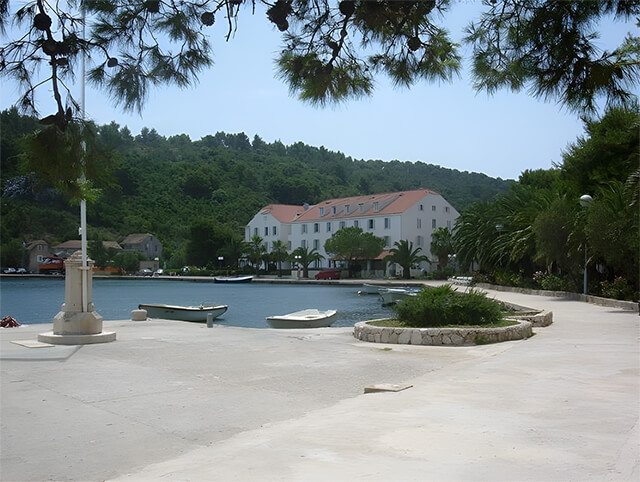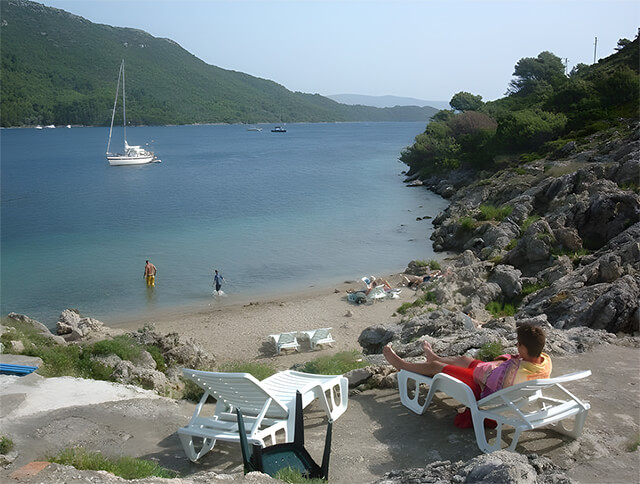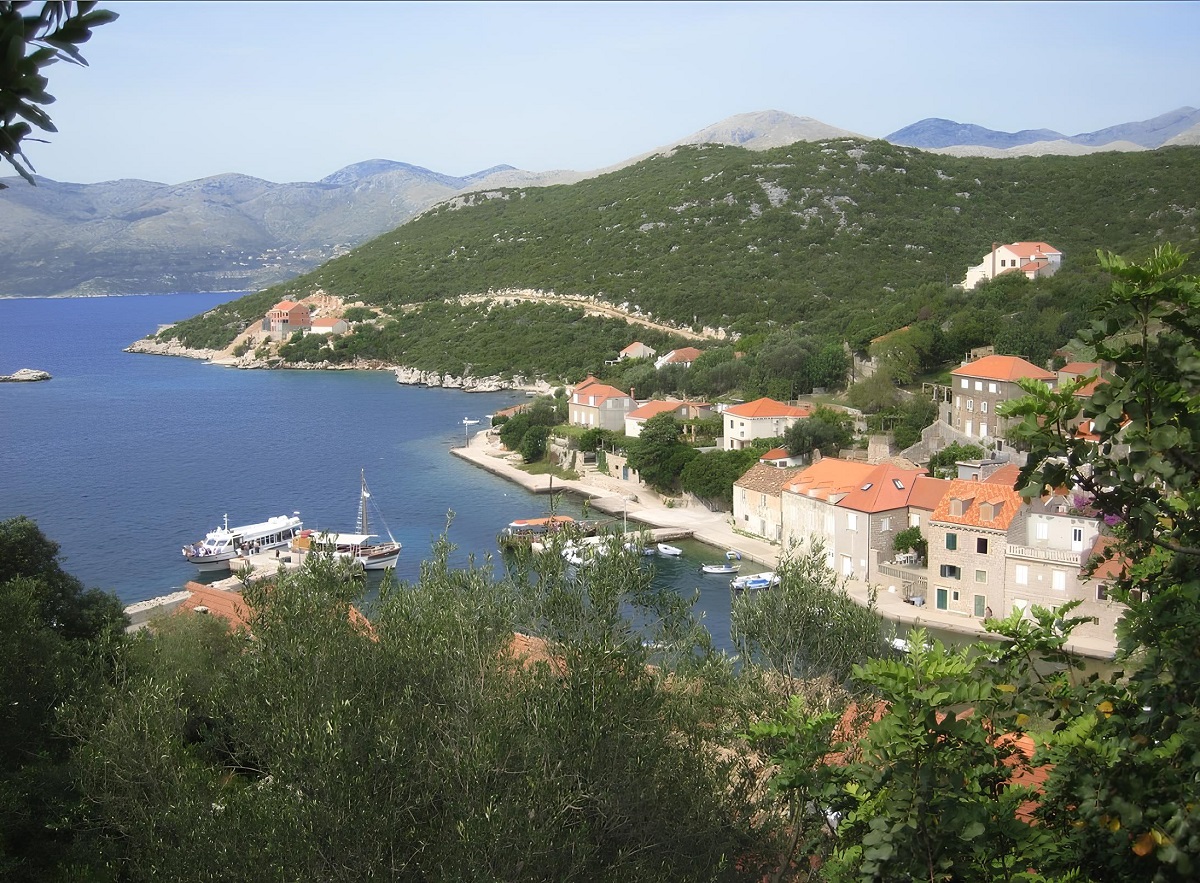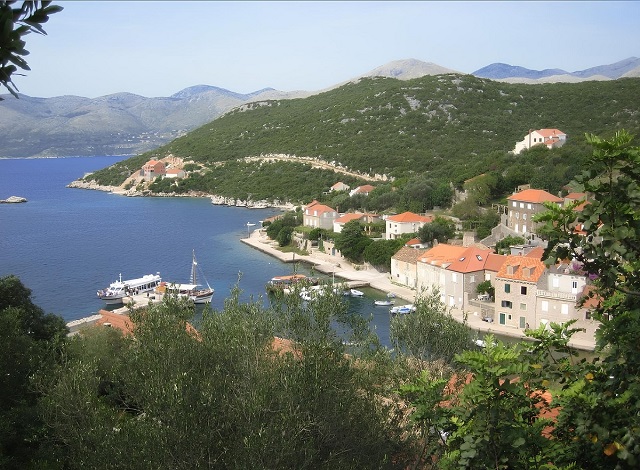Elaphiti Islands Tour: Everything I Learned While Visiting Croatia's Peaceful Archipelago – Beaches, Churches, and Car-Free Paradise
Updated:
The Elaphite Islands (of which there are 14) stretch between Dubrovnik, the Pelješac peninsula and the island of Mljet.
Nowadays, only three islands of the Elaphite ridge are inhabited – Kolocep, Lopud and Sipan, each of which is quite popular with tourists coming to Dubrovnik. They will be discussed in this article.
Despite the daily influx of tourists, I wouldn’t say that the tourist life on these three islands is booming.
A sense of peace is added by the almost complete ban on cars (except for the island of Šipan, but even here there are very few cars).
How to get to Elaphiti Islands from Dubrovnik
All three most visited islands of the Elaphite ridge (Kolocep, Lopud and Šipan) are connected to Dubrovnik by Jadrolinija ferries. Ferries run to Šipan and back, calling at the ports of the other two islands on the way (up to 4 per day in summer, once in winter).
- ticket price for ferry No. 807 M/S Postira of Jadrolinija (Kolocep, Lopud, port Sujuraj on the island of Šipan) – 1.5 euros (in high season) and 1.3 euros (in low season);
- ferry ticket price for ferry No. 831 Mate Balota of Jadrolinija (Kolocep, Lopud, Port Sujuraj on the island of Sipan) – 1.5 euros (high season) and 1.3 euros (low season);
- ticket price for TP Line catamaran No. 9807 Nona Ana (port Sipanska Luka on the island of Sipan) – EUR 2.4 (high season) and EUR 1.7 (low season);
- ticket price for ferry No. 903 M/B Europa of Grad Dubrovnik (Kolocep) – 1.4 euros (in high and low season).
I wrote in detail about ferries in Croatia in this article.
For those who want to stay on the islands for more than one day, you should keep in mind that there are only a few hotels, and there are very few rooms and apartments for rent. Therefore, in the high season it will be quite problematic to rent something for a night’s stay.
You can buy tickets for ferries from Dubrovnik port to the Elaphite Islands at the following links: to Kolocep Island | to Lopud Island
Koločep Island
The first island of the Elefita archipelago, on the waterway from Dubrovnik. It takes about 30 minutes by ferry.
It is only 2.6 square kilometers and less than one and a half hundred inhabitants, in two settlements:
- Donje Celo in the north of the island, where the ferry docks.
- Gornje-Chelo in the southeast.
How much time to allocate for visiting Kolocep
The proximity to Dubrovnik makes it possible to visit this island in one day. Although, if possible, it is better to spend two full days, including one night.
That is, get from Dubrovnik early in the morning, spend the whole day on the island, spend the night here, spend the next day here and take the last ferry back to the city.
If you do it this way, you will have enough time to visit both villages located on opposite sides of the island. That said, walk or kayak your way around, taking a couple hours to swim, sunbathe or snorkel.
And in the evening, be sure to sample the local cuisine and wine.
Beach and promenade in the Donje Čelo district
Things to do on Koločepe
- Spend the day at one of the village beaches: Don Đivan (in Gornje Čelo) or Donje Celo Beach (kayaking, sunbathing, snorkeling).
- Walk from Donje Celo village to Gornje Čelo (you can get back by bike or kayak, thus diversifying your walk).
- Visit the local churches: St. Anthony’s Church (built in the pre-Romanesque period) and the 15th century parish church of St. Nicholas.
- Swim in the Blue Cave.
For the most interesting excursions to Kolocep Island, with current prices, see here.
Church of St. Mary (10th century) on the island of Koločep
The best hiking and cycling routes on Koločep
The distance between the two villages can be covered in about half an hour on foot, climbing the hill of Kameno Brdo, from the seafront of both villages. From here, there are magnificent views of both small village coves.
There are also several tiny paths that wind along olive groves, pine trees and low shrubs. These, too, can be used to cross the island from northwest to southeast, and back again.
The highest peaks on the island are Kameno Brdo (97 m) and Kriz (125 m), so all the hiking and biking routes are very easy to follow.
For those who like more challenging treks, I suggest you try hiking along the coast along the rocky part of the island, on its southern coast.
Lopud Island
Lopud is the second largest of the 14 islands of the Elaphiti archipelago. It is actually two wooded, limestone highlands, with a nice green valley and a small village in the middle of the sea.
On the two opposite sides of the island are two bays (Šunj and Lopud), with picturesque sandy beaches, rare for Croatia, which also boast a gentle and shallow entrance to the sea.
The island is easily walkable, as its area is just over 4 square kilometers. Cars are not allowed to enter here, which, of course, favorably reflects on its ecology.
The main settlement of the island, the community of Lopud, is notable for the fact that the promenade of this village resembles an old aristocratic resort.
Houses stretching along the entire promenade are rented out as apartments to tourists. The latter proudly sit in armchairs right near the entrance to their temporary accommodation, which, in high season, is a great success.
Sights of Lopud Island
Lopud has its own Botanical Garden. Entrance to it is completely free for everyone.
In spite of its rather small size, it is evident that in its time this botanical garden could be called luxurious. This is indicated by stone columns of the former pavilion, ruins of some tower, as well as a small artificial pond in which golden fish glisten with bright scales.
In summer, in hot weather, the garden is a kind of oasis. Paths wind through the shade of trees and plants once brought here from all over the world.
The sun hardly penetrates through the foliage that has grown over the centuries, which creates a perfect atmosphere for the existence of a huge number of mosquitoes. Probably, that is why you will rarely meet any vacationers while walking in the park.
Botanical Garden on Lopud Island
Among the island’s sights, the Franciscan Monastery with St. Mary’s Church is of interest (despite its small size, the island boasts more than 20 churches!).
The monastery began to be built with a courtyard surrounded by walls as early as 1483. Then it was fortified with a higher wall (in 1516) and a fortress tower (in 1592). In 1808 the monastery was abandoned and, only recently, it was restored again.
It is worth mentioning that in the monastery church of St. Mary (Sveta Marija od Špilice) you can see some rather interesting old works of art. The most interesting of them are:
- triptych by the Venetian painter Pietro di Giovanni (1523);
- a triptych from the workshop of Nikola Božidarević;
- parts of a polyptych by Girolamo da Santacroce and his son Francesco;
- a late Renaissance crucifix by a member of the Venetian Bassano family;
- decorated with garlands, a Madonna by a Flemish painter of the seventeenth century, from the Italian circle.
Also of interest are the ruins of a Gothic fortress and the Church of the Holy Virgin in Sunj, which also houses works by artists from the Middle Ages.
Franciscan monastery
How much time to spend visiting Lopud
Lopud is an ideal island for a day trip from Dubrovnik. It is only an hour away by regular ferry.
Two days is ideal if you want to stay overnight and see all the sights. Also, have enough time to swim at the popular Sunj beach and take a short hike up one of the hills.
A week or more is for those looking for a leisurely and long beach vacation in a relatively quiet place, away from the crowds of tourists.
What to do on Lopud
- Visit the main attraction of the island, the 15th century Franciscan Monastery.
- Spend a day on the sandy beach of Šunj.
- Hike to the 15th-century church of Our Lady of Sunja (Gospa od Sunja), located on a hill above the bay and beach of Šunj. The church is notable for its Renaissance-Baroque wooden altar, with sculptures and reliefs of saints illustrating the Assumption.
- Climb to the top of the island’s highest hill to see the ruins of the 16th-century fortress, Sutvrač (a Spanish fort), as well as beautiful views of neighboring islands and the mainland.
- Visit the 16th century Church of the Holy Trinity, located right at the entrance to the harbor – the only Baroque building on the island, with Gothic and Renaissance elements.
The most interesting excursions to the island of Lopud, with current prices – see here.
Ruins of a 16th century fortress – Sutvrač on the top of the highest hill on Lopud Island
Šipan Island
The largest of the inhabited Elaphite islands. Shipan is characterized by picturesque rocky hills that rise above a long fertile valley with sparse villages.
There are few special attractions and no nightlife at all. But it is hard to find a better place for leisurely and quiet walks in nature.
Sights of Šipan Island
The village of Sudurad is the first thing tourists see when sailing to Šipan. This is where the Jadrolinija ferry docks – it is the last point on its route.
Above a handful of houses standing by the bay are two stone towers erected here to guard the walled summer villa of Dubrovica shipowner Vice Stepović Skočibuha (XVI century).
The summer villa of Dubrovnik shipowner Vice Stepović Skočibuha (16th century)
The villa is partially restored but, for some reason, is open only to pre-announced groups.
Rounding the villa, the main village road descends to the Church of the Holy Spirit (Crkva Svetog Duha). This fortified structure was built as a shelter for the locals in case of a pirate raid.
From the church, passing the village of Paklena, a winding road leads to the fortified Church of Our Lady (Crkva velike Gospe), about one kilometer from the pier of Suđurađ.
It is a former monastery building, now dilapidated and as if drowned in a thicket. It is difficult to get inside. But the sight of its sixteenth-century crenellated tower rising above the greenery rewards the walk.
The fortified Church of Our Lady, located approximately one kilometer from the pier of the village of Suđurađ
The only properly paved road on the island leads north from the Church of the Holy Spirit. The seven kilometers to the settlement of Šipanska Luka are set amidst beautiful countryside.
The vineyards and olive groves that cover the central part of the island, the ruins of summer palaces of Dubrovnik nobles and the aroma of wild field herbs – all this is found on the island of Šipan.
Village of Szypanska Luka
The end point of the catamaran Nona Ana, from TP Line. The village of Šipanska Luka is a charming place lost in a deep bay on the northern tip of the island.
There is not much to see here for the curious tourist. The village lives its life under a huge plane tree, as old as the plane trees growing in Trsteno.
The main attraction of Šipanska Luka is the abandoned villa of Stepančić, located by the harbor. The villa’s balcony is supported by stone lions, which seem to shout that the building is in need of restoration.
Harbor in Šipanska Luka with views of Stepancic’s abandoned summer villa
The most attractive beach on Šipanska Luka is located 500 meters from the village harbor. It is a narrow strip of sand pressed against a chain of rocks separating the western part of the bay from the sea.
More secluded bathing spots can be found on the opposite side of the bay. They can be reached by a path that leads past the ferry pier and winds for a few kilometers past cliffs and olive groves.
How much time to spend visiting Šipan
Most of those who go to Šipan from Dubrovnik do so only as part of a day trip. The island is about 1 hour and 20 minutes away, by ferry.
However, I would recommend spending at least 2 days there. That is, leave Dubrovnik early in the morning, spend the whole day on the island, spend the night, spend the next day there, and take the last ferry back to Dubrovnik.
In this case, you will have enough time to visit both villages (Šipanska Luka and Suđurađ), located on opposite sides of the island, either on foot or by bike.
You will have plenty of time for swimming, sunbathing or snorkeling. And then, a whole evening to taste the local cuisine and wines in one of the cozy restaurants by the sea.
What to do on Shipan
- The castle and tower of Skoczybuch Stepovic.
- Benedictine monastery complex in Paklen, with the church of St. Mary. All in the vicinity of Sujuraj.
- Walking or cycling: along the Šipansko Polje Valley, between Šipanska Luka and Sudjuraj, or/and a walk from Šipanska Luka to Velja Vrch.
- Spend the day at the beach.
The most interesting excursions to Shipan Island, with current prices – see here.
A few more photos of Shipan Island
The best hiking and biking trails in Shipan
The highest point of the island is at an altitude of only 243 meters. Therefore, all hiking and cycling routes here are of the easy to moderate variety.
The routes are well marked. Some of them pass through vineyards and olive groves, along low shrubs and in the shade of dense pines.
The most popular route on Šipan, 4 km long, starts from Šipanska Luka and leads to the top of the highest hill on the island, Velji Vrch (243 m). From here you can enjoy a truly breathtaking view of the village and the bay, as well as the neighboring islands of the Elaphiti archipelago, and further on to the island of Mljet and the Pelješac peninsula.
Other popular trails on the island wind through the fields between Shipan Luka and Sudouraj, where a network of ancient paths leads you through fertile fields covered with vineyards, fig and olive groves
